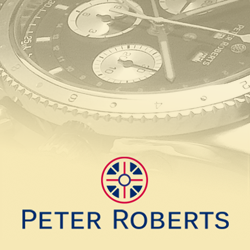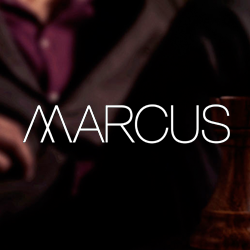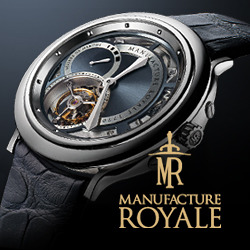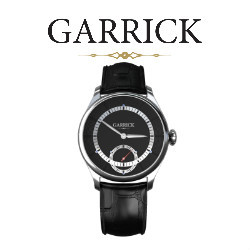No Time Like the Right Time
Ken Kessler looks at watches for the well-dressed man
Whole volumes have been written about formal attire for men: Which shoes/socks/tie to wear. Appropriate colours. Trouser cuffs or not. Cuff links or not. Collar length, collar style, cummerbund, belt or braces. With all this attention to detail, how on earth did they overlook the wristwatch?
It is, after all, the only item of jewellery a man can wear without shame (beyond his wedding ring) unless he’s part of the music or film industry. While denizens of the entertainment business have thrown out the rule book – have you seen what’s worn at an Oscars ceremony? – for some, a sense of decorum is still to be cherished.
A wise Italian watch vendor once told this writer, in the early days of his watch obsession, that every sensible, sophisticated adult must own at least three watches: one for day-to-day use, including business, one for leisure or sport, and one for formal occasions. Neither he nor I could name a single timepiece suitable for all three situations. And the area where the greatest transgressions were committed was evening wear: however suitable a Swatch might be while mowing the lawn or playing handball, it screams only one thing when worn with a tux. And that’s an epithet about one’s spending habits best not repeated here.
Because society at large treats the watch as a portable appliance, with only a tiny percentage of the public showing even a modicum of the concern of an enthusiast, most people rarely give watches a second thought. And yet they’ll take a half-hour to choose a tie. But the watch, as has been shown continuously over the past 20 years, has become an indicator of one’s taste, status and discretion. It is used by men to assess new acquaintances the way women employ shoes or a handbag. And the biggest faux pas, far worse than simply wearing a cheap watch, is appearing at a formal or even semi-formal affair with the wrist equivalent of training shoes.
Sport watches, whatever their pedigree, are best worn on the golf course, at the racing circuit, or anywhere you’re liable to get wet. They’re too chunky, too over-the-top to peer out from under the cuff of a snow-white, hand-tailored shirt. Even expensive, complicated, highly-esteemed horological classics – any of the Rolex Oysters, Audemars Piguet’s Royal Oak, the Patek Philippe Nautilus – were designed with a specific purpose in mind … and wearing such pieces while enjoying cocktails and caviar before the opera isn’t one of them.
While few watch retailers or manufacturers have the guts to tell you that their chunky, 18k gold-on-a-bracelet diving watch isn’t suitable with dress attire, there are subtle ways in which they can address the problem. Rolex, for example, has always had its Cellini line of dress watches. It was their way of saying, ‘Don’t wear your Submariner to a black-tie event’ without disrespecting their own wares.
In 2005, though, they relaunched a sublime rectangular model called the Prince, with a brand-new mechanical movement, available in four styles with the designs rooted in the Art Deco period. Along with the other truly iconic rectangular or square timepieces – Cartier’s sublime Tank and the clever Jaeger-LeCoultre Reverso – the new Prince is a perfect choice for the evening.
Another danger area is the size and gem count. A glance at the society pages of any lifestyle magazine will show the schism: on one side, wearing timepieces the size of a scone and that require viewing through sunglasses, are the footballers, rappers, chavs, the Beckhams and Z-list ‘celebrities’ who possess what can only be described as anti-taste. On the other side, the grown-ups. While taste is wholly subjective, you have to ask yourself, with whom do I identify? Sean Connery or Sean Coombs?
If the former was your choice, you’ll be relieved to know that you are just as well-served as the bling worshippers, despite the current dominance of gem encrustation. Although every brand now offers diamond- and sapphire-clad atrocities to sell in Cannes, Beverly Hills and Miami – the watch companies are, after all, in business to make a profit – the same brands also continue, discreetly and honourably, to serve customers with timeless tastes.
For those who prefer the blue chip approach, you can rarely go wrong with any slim dress watch on a black strap from the Big Four of classic horology: Audemars Piguet, Jaeger-LeCoultre, Patek Philippe and Vacheron Constantin. From the traditional jewellery brands, it’s impossible to fault Cartier, Chopard, Tiffany and Van Cleef & Arpels. Among the great revived brands, Blancpain, Breguet and A. Lange & Söhne provide the challenge to the Big Four. Of the new haute horlogeres, De Bethune, Parmigiani Fleurier and Philippe Dufour have the lock on taste. Other great brands with sophisticated dress watches include Breitiling, with their latest offering in the Bentley range, Girard-Perregaux, IWC and Zenith.
But even with a slim, subtle selection – preferably with no more on the dial than the time and date – the choices are still numerous enough to cause confusion. Yellow, red, pink or white gold, or platinum … or even steel? Round, rectangular, cushion-shaped or square? Bracelet or strap? Again, allowing for the utter subjectivity of taste, a few observations:
Choice of metal: If you’re wearing cufflinks with visible metal parts, match the watch to the cufflinks. Red and rose gold are the hottest metals at the moment, but they smack a bit too much of fashion. You can never go wrong with the white metals – platinum, white gold or stainless steel – and yellow gold is, regardless of fashion, the default choice for luxury goods. Appreciation for stainless steel, however, has increased over the past decade, so the various brands do offer very fine timepieces in what many foolishly regard as an ‘economy’ choice. As any watch aficionado will tell you, it’s probably the best metal of all from which to fashion a watch case. And certainly more labour-intensive than the so-called precious metals.
Round, rectangular, cushion-shaped or square case: Square is the more truly formal and subtle, but here you can follow your heart. Cushion shapes fall somewhere in-between. But do avoid the new wave of watches with outlandish, unconventional shapes. The novelty soon wears off.
Bracelet or strap: Bracelets, especially in gold, are simply too over-the-top for dress wear. Indeed, their only valid use is for sport watches, such as Rolex’s Submariner, which should be spending at least part of their lives submerged; water and leather straps do not mix. The safest, most tasteful choice of all is a thin, black, crocodile strap. As with brown shoes, leave the natural crocodile or coloured straps for day or casual wear. But allowing some freedom, certain authorities suggest that a yellow gold watch looks best with a honey-brown strap, and rose gold watches look just right with oxblood-coloured crocodile.
In recent years, certain brands have championed rubber straps on expensive watches, and sales have gone through the roof. The phenomenon has been copied by every company producing a diving watch. But there’s also been a near-vertical increase in tattoos, body-piercing and grown men wearing mid-calf shorts, so approach with caution: one hopes that this madness is fleeting.
A conservative estimate of the number of watch models suitable for formal wear – also able to double on occasion for use with a sober suit during business hours – would be in the high hundreds. But a safety valve has been available for 75 years: If in doubt, buy a basic Patek Philippe Calatrava. Not only will your partner complement your taste, so will your great-grandson.
(47 Park Street, 2006)









